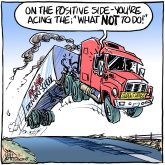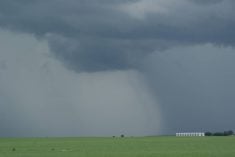Most large organizations launch periodic campaigns to motivate their employees and customers to action. But if you are the Canada Revenue Agency (CRA), how do you motivate the thousands of auditors and investigators you have hired to root out tax revenue that is seeping from the government’s coffers?
That’s easy – you declare March Fraud Prevention Month, arm 300 of your best investigators with search warrants and unleash them to search 50 “promoter” locations across Western Canada believed to be participating in tax fraud.
The CRA agents were investigating large scale tax fraud related to the alleged operation of fictitious Registered Retirement Savings Plans, other investment scams and ordinary tax evasion.
Read Also

Higher farmland taxes for investors could solve two problems
The highest education and health care land tax would be for landlords, including investment companies, with no family ties to the land.
A campaign of this magnitude indicates the problem is large and CRA had to act.
But while the promoters of these schemes were the bad guys, siphoning retirement savings from taxpayers, it was the taxpayers left holding the bag with CRA. Many Canadians lost their entire retirement savings to these fraudulent operations when the promoter absconded with the funds and could not be found.
Adding insult to injury, if the taxpayers withdrew or invested funds from their RRSP or Registered Retirement Income Fund (RRIF), CRA reassessed them for taxes and any applicable interest due on those withdrawals or investments. Penalties could also be levied for unreported amounts.
It was a case where the bad guys were getting away with the scam but CRA was meting out justice only on the taxpayer.
To be fair to CRA, it had warned taxpayers to be wary of questionable RRSP and RRIF tax-free withdrawal schemes for some time, although mostly through tax alerts published on its website. Taxpayers not naturally motivated to go the CRA website for their daily news wouldn’t know what to look for.
To date, CRA claims that more than 3,100 taxpayers have found out the hard way. They have been reassessed about $144 million in additional taxable income. Audits are in progress on another 1,800 taxpayers involving $84 million in RRSP and RRIF investments, and CRA promises to audit anyone they suspect of participating in such schemes.
CRA has identified indicators that could suggest the investment will not meet the CRA smell test for legitimacy:
- The promoter will frequently offer the owner of a self-directed RRSP or RRIF the opportunity to buy an investment through a specifically named trustee.
- The investment could be structured as shares in a company, units of participation in a co-operative or a mortgage.
- Often armed with a legal opinion, the promoters will promise that the structure of the deal will allow investors to withdraw funds from their RRSP or RRIF without paying taxes. They frequently sweeten the deal by offering to return part of the investment by offshore debit or credit cards, offshore bank accounts or loan-back arrangements.
- One dead giveaway, CRA suggests, is the promise of returns three or more times the amount invested in the RRSP or RRIF.
When considering investing in such a scheme, investors would be wise to follow the adage: “If it looks too good to be true, it probably is.”
Larry Roche is a tax analyst with farm taxation and planning specialists Farm Business Consultants Inc. He can be contacted at fbc@fbc.ca or call 800-860-7011.














